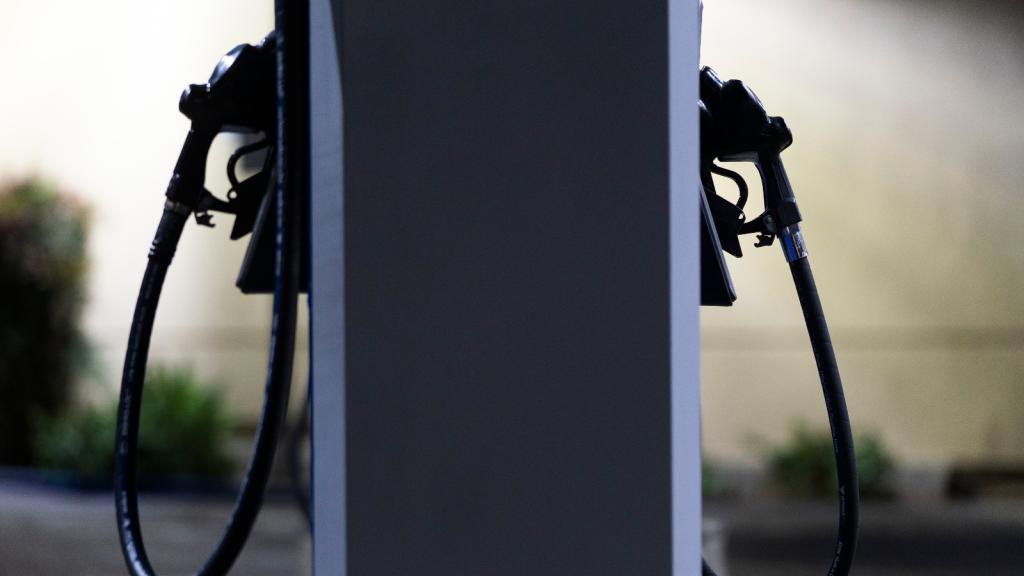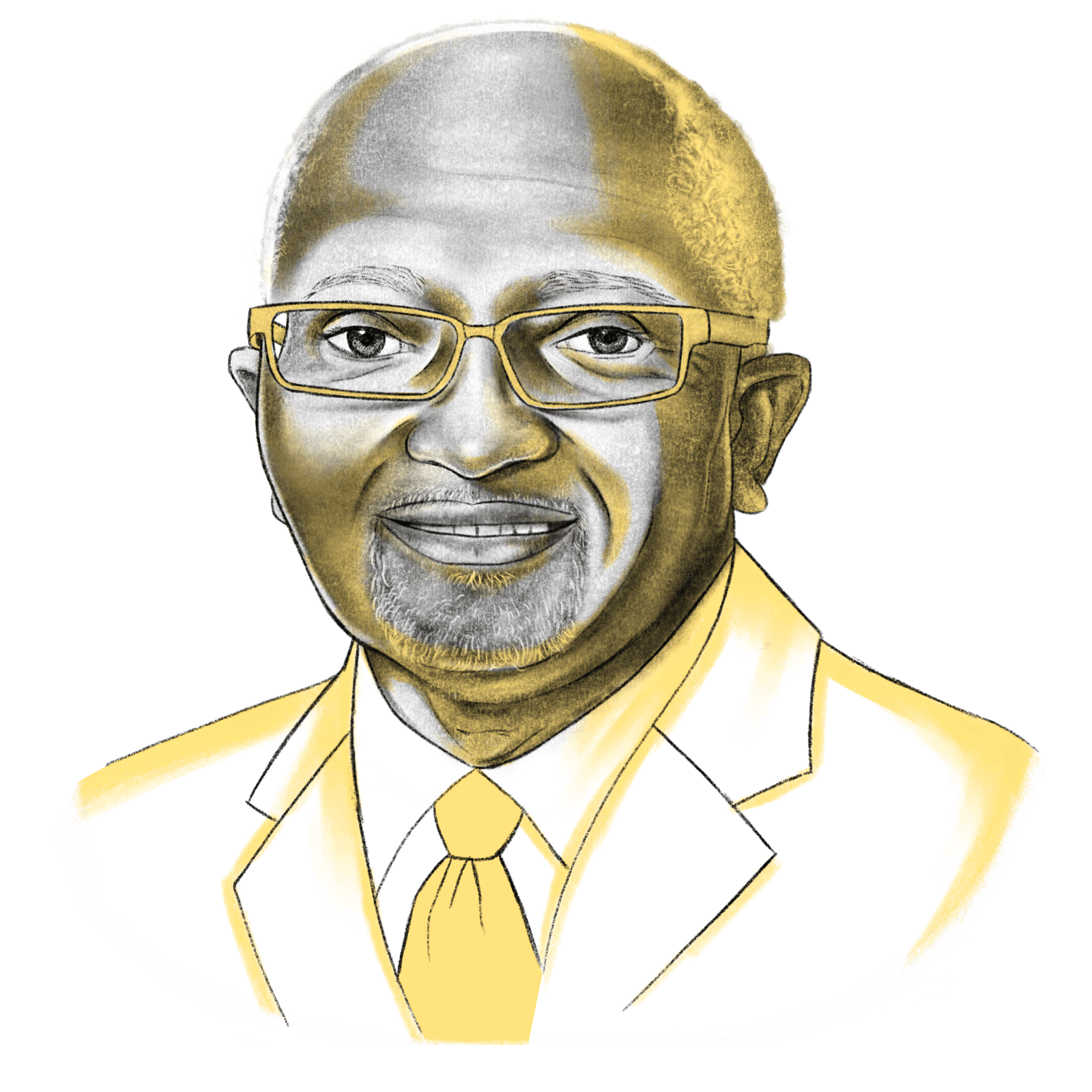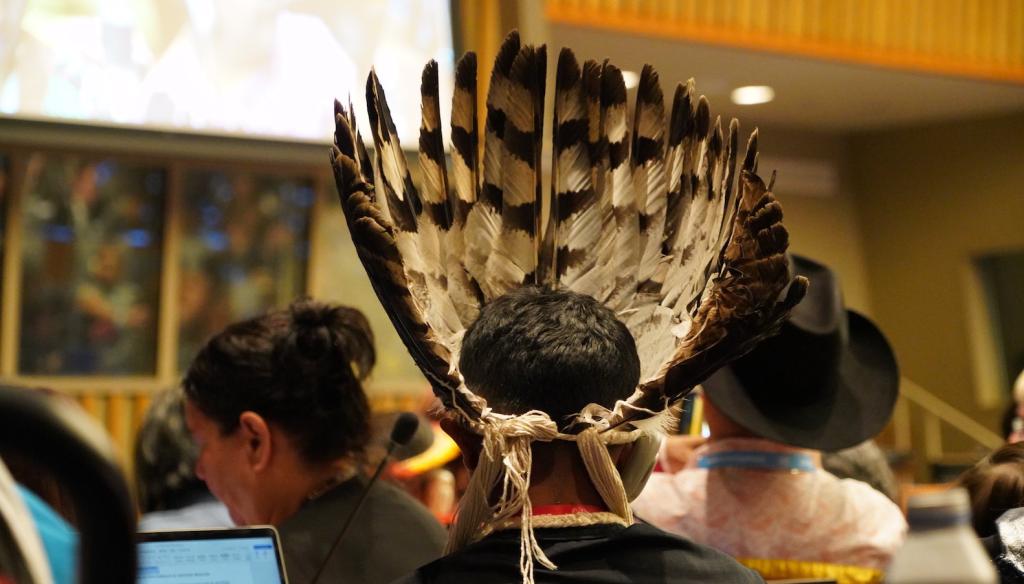This story was produced by Grist and co-published with Houston Public Media.
Leisa Glenn spent decades living in the Fifth Ward, a historically Black neighborhood in Houston, known for having one of the city’s best views of downtown. Every July 4th, Glenn, 65, and her neighbors would stream out of their houses into the summer heat and crowd onto front porches to watch the fireworks display.
She remembers the smell of the barbeque pit charring hot dogs and how neighbors would gather on every surface outside to watch: on top of cars, in folding chairs, and on porch steps.
“To look at the skyline at night, downtown, every night in different colors, and when they light it up — it’s like nothing you’ve ever seen before,” said Glenn.
Over the years, however, this crowd got smaller and smaller. Neighbors fell sick. Others moved away.
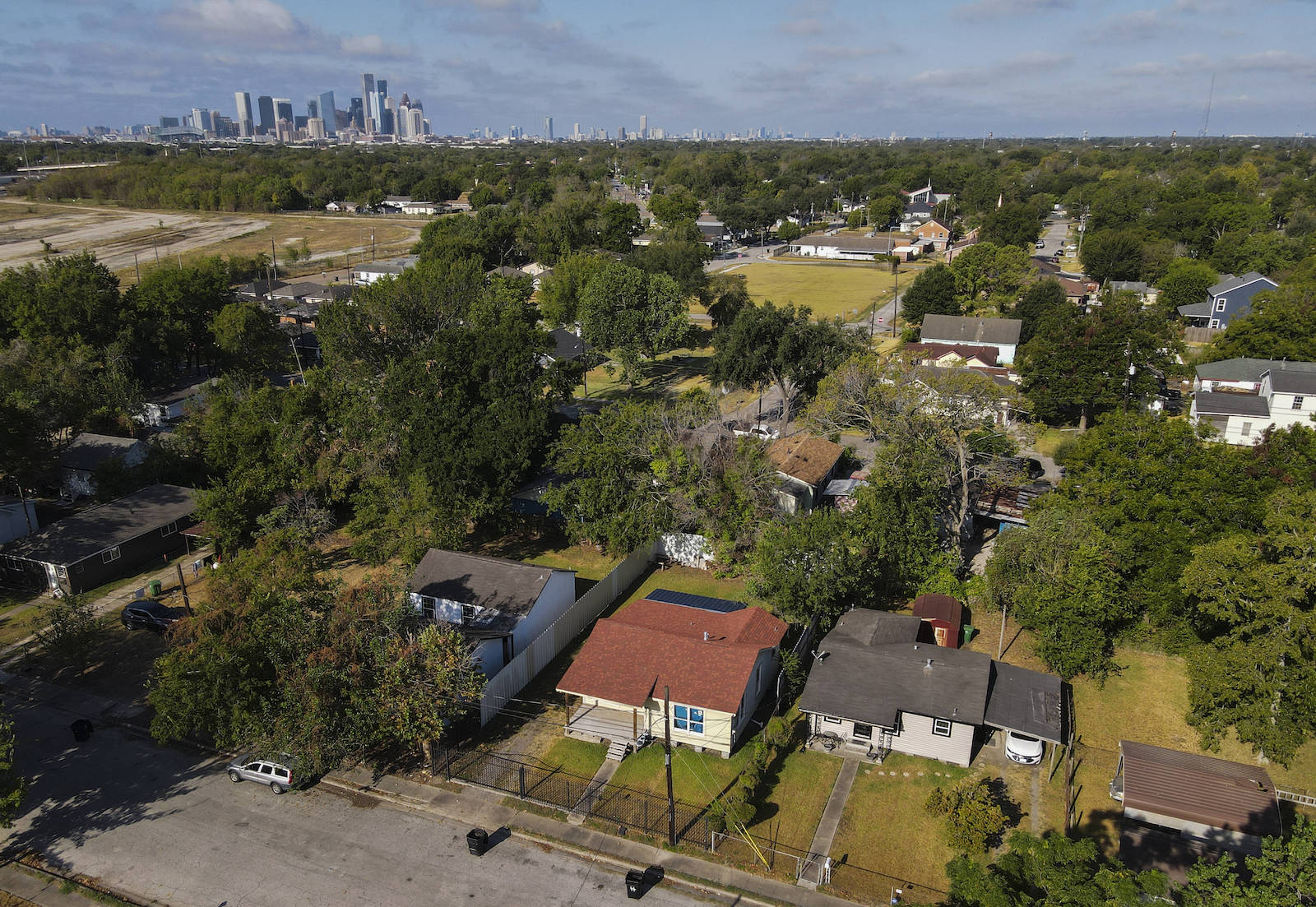
Buried beneath the Fifth Ward and its neighboring community, Kashmere Gardens, is an expansive toxic plume of creosote derived from coal tar. Historically, creosote has been used in the United States to preserve wood such as railroad ties and utility poles; it has also been linked to health issues such as lung irritation, stomach pain, rashes, liver and kidney problems, and even cancer, according to the Agency for Toxic Substances and Disease Registry and the Environmental Protection Agency.
Glenn remembers the old Houston Wood Preserving Works plant in the neighborhood that sat adjacent to the Englewood rail yard, which is the biggest rail yard in the city and one of the largest in the Union Pacific system.
For decades, its creosote was ever-present in the community: Strong odors permeated the neighborhood. Kids swam in a lagoon filled with waste from the factory. And when it rained, a rainbow oil slick would coat the streets.
While the actual facility is long gone, shut down in 1984, the creosote plume it created persists. The site is currently owned by Union Pacific Railroad, which acquired it in a merger with the Southern Pacific Railroad in the 1990s.
Glenn can clearly recall when the cancer cases started. It was the early 1990s, and the first person on her street to get sick was Carolyn, only 35 when she died, according to Glenn.
“So it really started at the corner with Carolyn,” she said. As more people started getting sick, “it just started trickling down the street.”
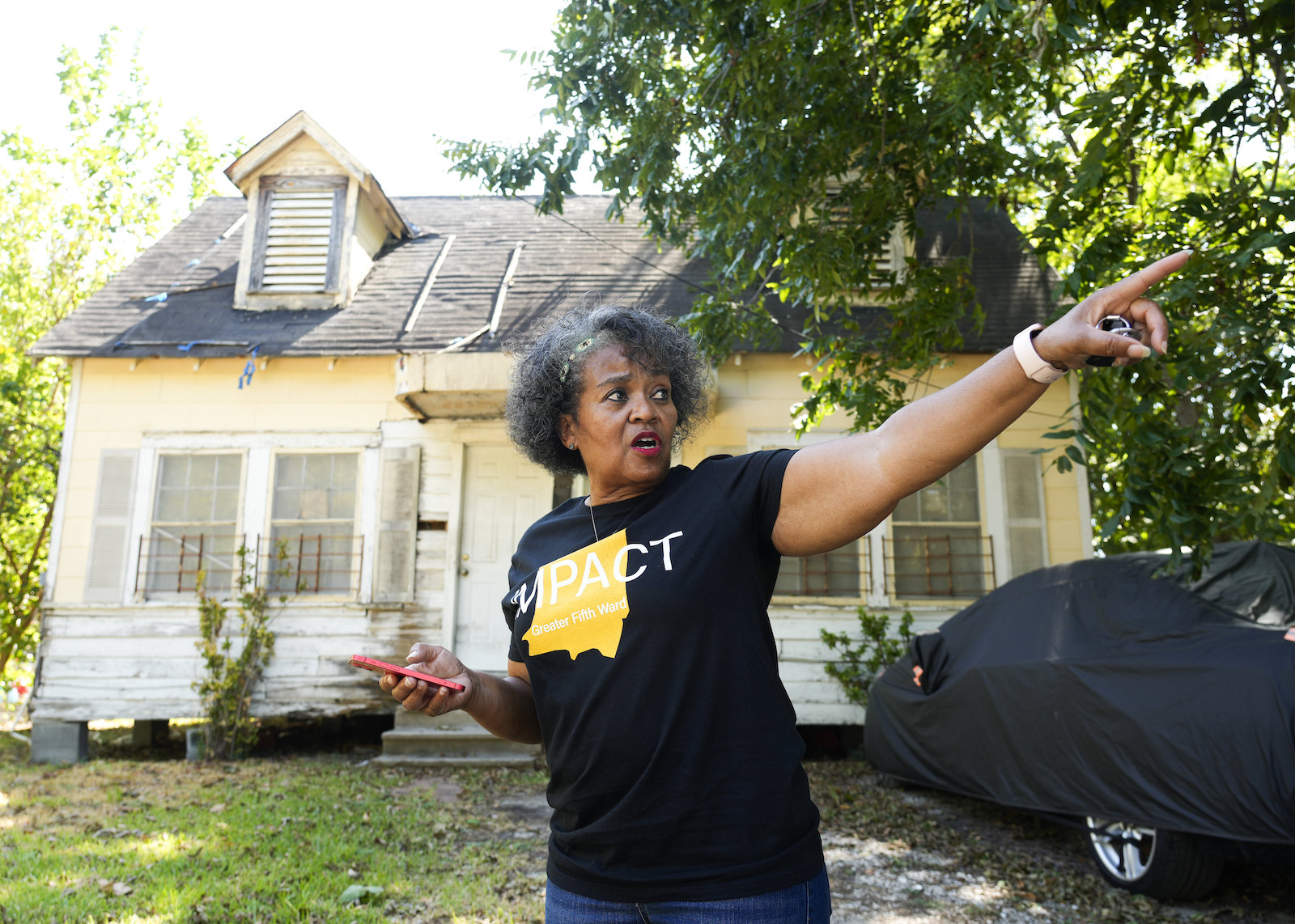
When Glenn talks about the people who have passed away, she mentions there’s not enough time for her to name all of them. But she starts ticking off people on the list: Mr. CL, Ms. Osborn, Mr. Johnny, Ms. Barbara Beale, her former friend and collaborator, and, of course, her mother Lucill.
Finally, in her late 30s, Glenn left after dealing with ongoing stomach issues for years. She often experienced a combination of coughing and pain that would get so bad she would throw up. Sometimes she coughed up blood. To this day, she has to take medication.
In 2019, the Texas Department of Health and Human Services established three separate cancer clusters in the Fifth Ward and Kashmere Gardens. A 2021 report from the Texas Department of State Health Services established one childhood leukemia cluster, confirming what residents had been saying for years.
When it comes to creosote, “this was a very, very high exposure area,” said Loren Hopkins, chief environmental science officer for the Houston Health Department. “We know that exposure to these chemicals causes these cancers,” she told Grist.
She also noted that in cancer cluster studies, the only types of cancers investigated were ones known to be caused by creosote and other cancer-causing chemicals found at the Union Pacific Railroad site.
It’s hard to flesh out what illnesses are caused by past exposure to creosote from when the facility was open versus current exposure to the plume lurking beneath residents’ feet. The U.S. EPA is currently conducting comprehensive testing in conjunction with Union Pacific to understand these competing timelines and exposure risks. Testing could take up to a year to complete.
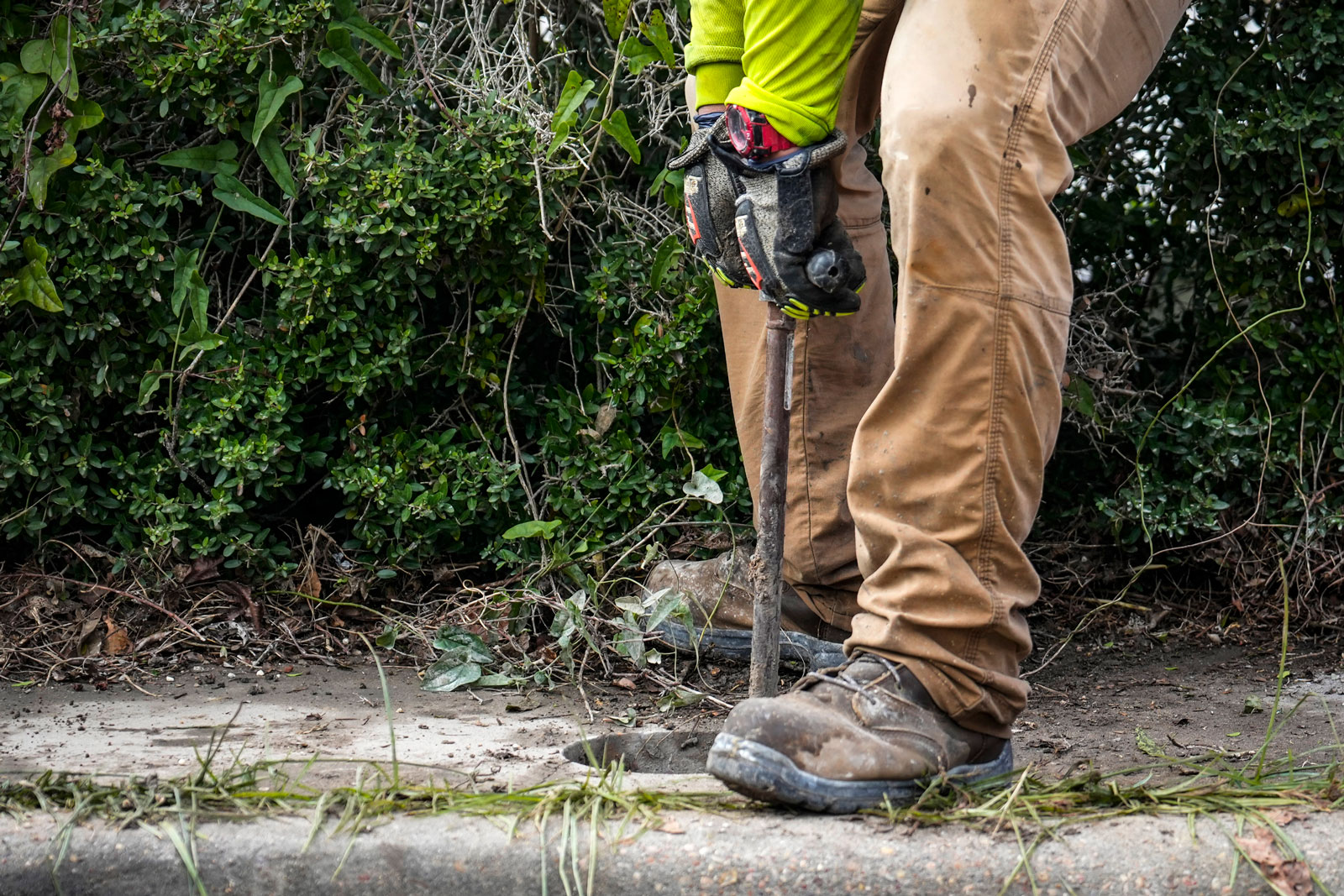
Last July, after years of pleas from residents and several scientific and public health studies, Houston’s City Council announced a plan to relocate residents. In September, it approved $5 million to help residents move away from the contamination. Then-Mayor Sylvester Turner celebrated the funding, but warned it needed to be just the beginning: His office estimated relocating all 110 lots on the plume would cost about $24 million. As of last summer, 10 families have signed up for the buyout plan.
Last month, Houston’s new mayor, John Whitmire, allocated the first $2 million of those funds to Houston’s Land Bank to begin relocations.
There is a long history in the United States of companies paying to relocate residents rather than cleaning up polluted communities, from Diamond, Louisiana to Detroit, Michigan. But it is a rarer case when a city steps in to remediate this company-caused harm. Public health and environmental justice experts told Grist that Houston may be one of the first major cities in the United States to facilitate residential buyouts not on the basis of a climate disaster, but because of pollution.
After years of residents in the area trying to get Union Pacific to come to the table to discuss remediating the area, the city took an unprecedented step of offering the voluntary buyouts to residents on its own dime.
That response “feels unique and somewhat novel, in the history of U.S. environmental justice movements,” said Manann Donoghoe, a senior research associate at the Brookings Institute. He also lauded how quickly the city seemed to acknowledge and act once the cancer clusters were established. “What’s most interesting for me, as somebody who writes about climate reparations, was to see the city’s response,” he said. “To see immediately the mayor coming out and saying that, ‘Yes, this is an injustice, this is something that should be addressed.’”
But with city money involved, concerns are being raised by members of IMPACT, a local group that advocates for the people who live near the creosote plume, about what will happen to the land once residents are relocated. Further complicating the issue is that no one is sure about the risk.
When current Fifth Ward resident Mary Hutchins, 61, looks around her neighborhood, it’s clear that things are changing. Streets have been resurfaced and there’s a new, massive residential and retail complex that opened last year in Fifth Ward, which includes a sprawling apartment complex with 360 units, nearly 250,000 square feet of office space, and over 100,000 square feet of retail, according to the Houston Chronicle.
Hutchins is concerned that just as plans have solidified for residents to relocate, this development could price the original homeowners out of the area — meaning that any future cleanups would only benefit newer residents.
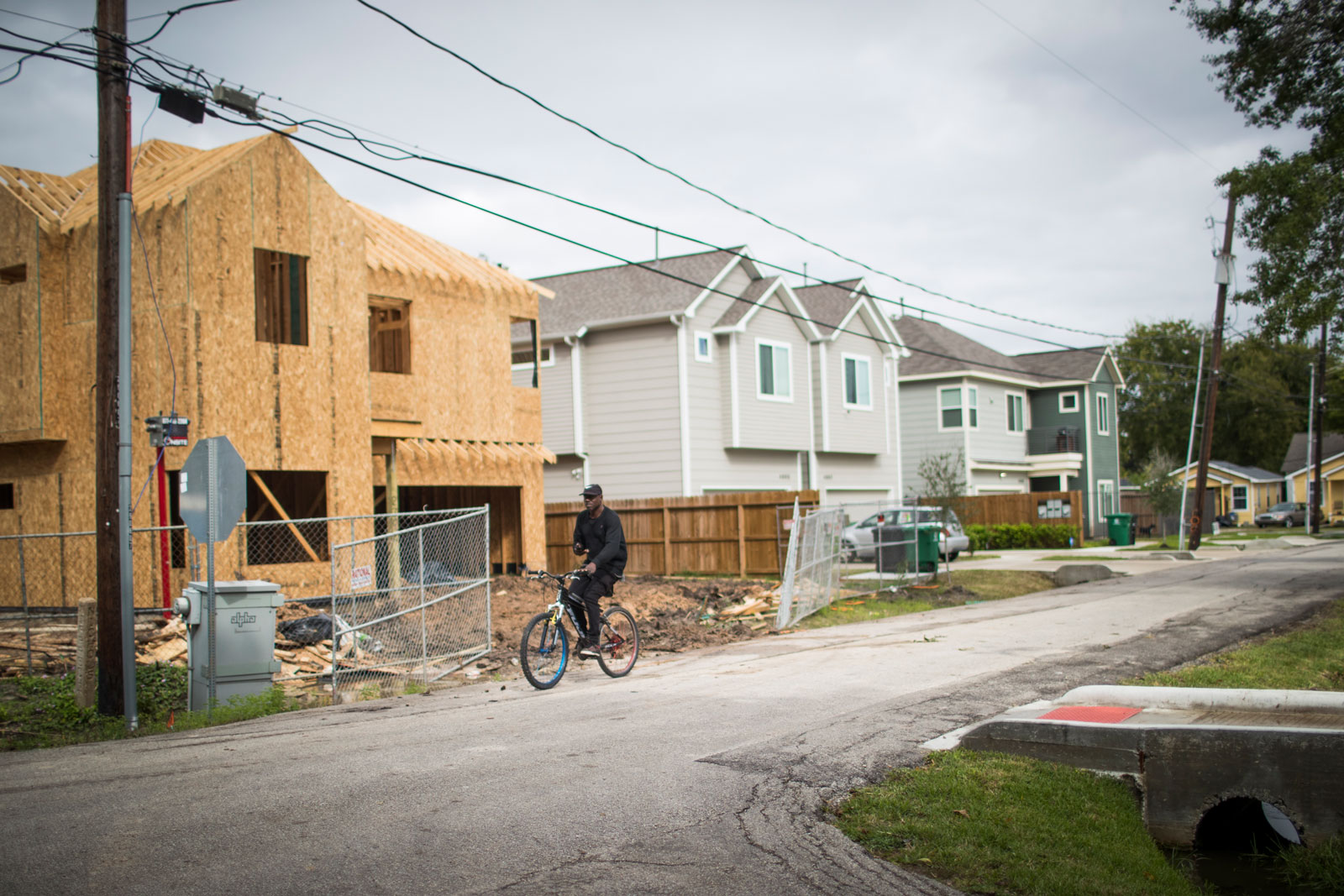
“So people who once lived in this neighborhood, they could never come back here, never. Because they can’t afford it,” Hutchins said. “Now it’s like they’re building all around us — everything is up-and-coming.”
At a recent city council meeting, Steven David, deputy chief of staff for Mayor Whitmire, presented new research that confirmed what Hutchins had observed: Since 2019, the city has issued 88 permits for new construction of single-family homes and 17 permits for new multi-family homes. Another concerning development is that the incomingresidents weren’t warned about the cancer cluster. In response, Mayor Whitmire put a pause on development in the Fifth Ward. He also thinks the bill for cleanup should be funded by Union Pacific.
“They have to assist with the cleanup of the mess that they created,” he said.
Meanwhile, residents are left in limbo. Do they stay or do they go?
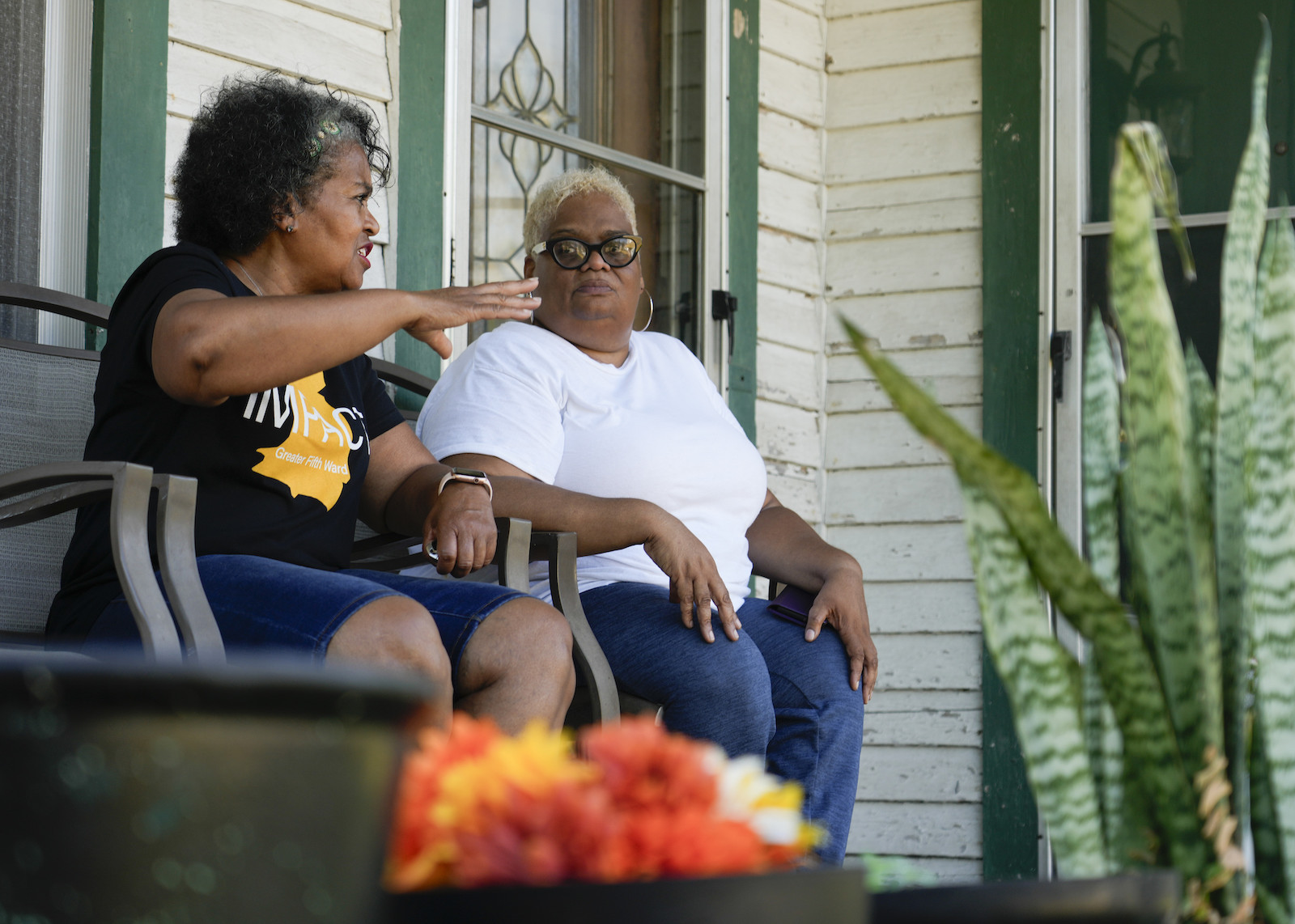
Houston’s Fifth Ward neighborhood is a part of the city’s original ward system. Founded after the Civil War by a racially mixed group of Black freedmen and white residents, by 1880 the neighborhood was predominantly Black and became an epicenter for Black culture in Houston.
Glenn, Hutchins, and others who grew up in the neighborhood describe it as extremely tight-knit.
“If your mom was gone all day, or had some business to take care of, you could always knock on the door and say, ‘My mom ain’t home,’” Glenn said. Whoever answered always invited you in.
“‘Okay, come on over here and go get the rest of ’em. Y’all gone eat.’” Glenn recounted. “It was a loving neighborhood.”
The memories of creosote are just as strong.
What angers Glenn was the silence in the wake of so many deaths, and the fact the neighborhood had to look for answers on their own.
“And nobody still didn’t say anything after all these people had died,” she said. “We just knew it was something, but we couldn’t figure out what it was.”
Glenn is the president of IMPACT. The group has been raising awareness of the issue since 2014, when she cofounded the group with Sandra Small, the former president who passed away in 2021 from cancer.
The group started by gathering residents to talk about what had happened to their neighborhood, but it evolved into organizing protests and attending public meetings to incite action. At its first protest, Glenn created the group’s unofficial mascot, creosote man: a skeleton with a T-shirt emblazoned with the words “Creosote killed me.” The group has used him ever since to raise awareness of lost neighbors and loved ones to cancer in the area.
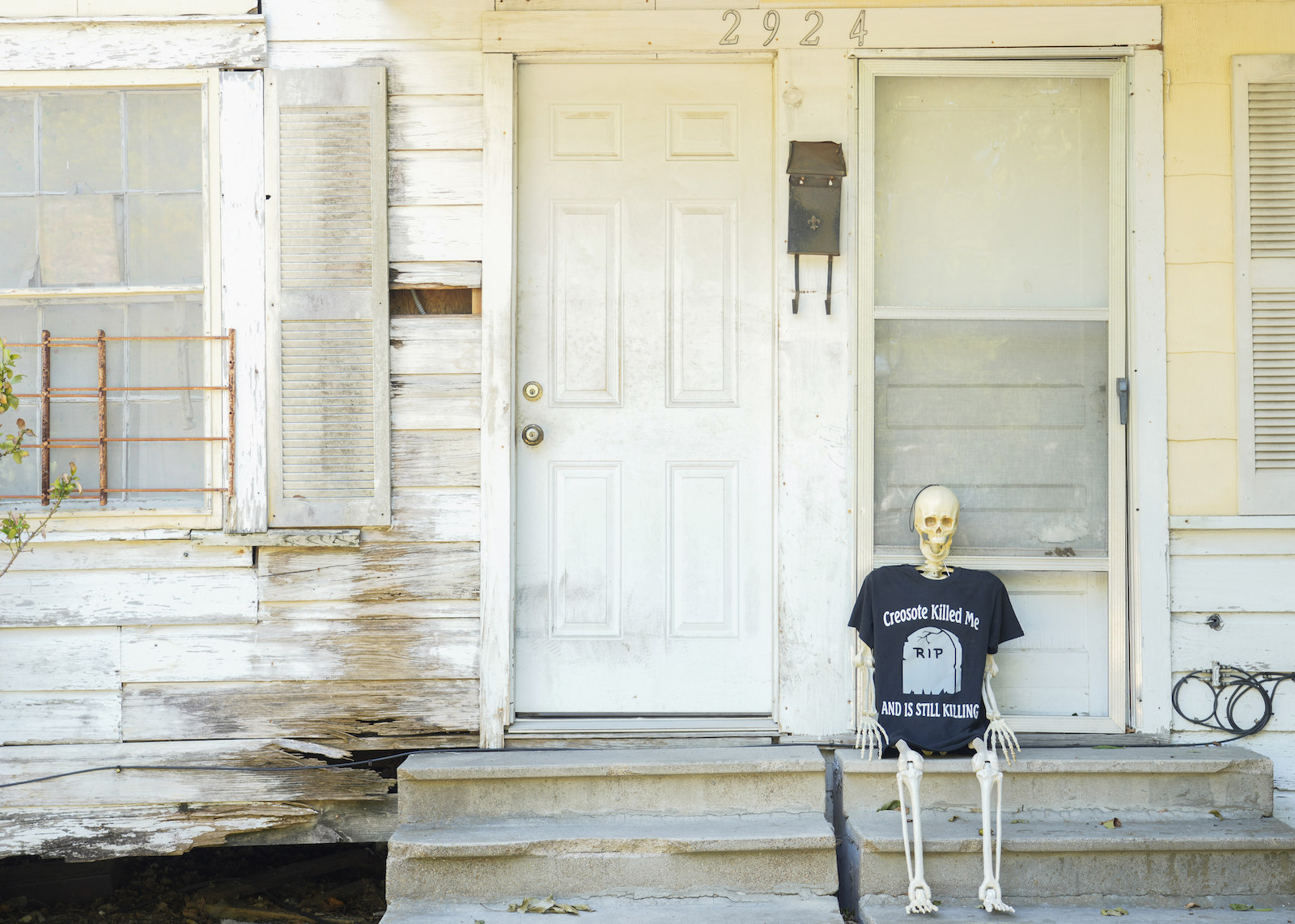
IMPACT soon started to collaborate with scientists and the city, zeroing in on the old wood preservation plant as the likely source of the creosote contamination that was sickening residents. Next, IMPACT focused on finding solutions. The relocation option came out of early conversations with residents, according to Hopkins from the city’s health department.
She was present at those meetings in 2019 and remembers how important a voluntary buyout option was to residents.
“This was a request by the community,” said Hopkins, “and their reasons were not associated with a specific contamination level. It was associated with the stress and concern, and the devaluation and the injustice of it.”
Often the choice between staying and leaving isn’t much of a choice. Most of the people located in this part of Houston grew up here, in houses that were passed down from generation to generation.
Reverend James Caldwell grew up in the Fifth Ward; his parents moved there in the early 1950s. He spent years as an assistant pastor at the Fifth Ward Baptist Church. He now is associated with the St. Mark Missionary Baptist Church in Humble, Texas.
In 2008, he founded the Coalition of Community Organizations, or COCO, in Houston, an organization that calls for action on environmental injustice, disaster recovery, and fair housing in Houston.
“The creosote issue, it has been decades old, decades,” Caldwell said. “It’s nothing new. A lot of lives have been lost. And there are still a lot of illnesses, sicknesses as a result of it.” He’s lost two people to cancer in the area, including former IMPACT member Barbara Beale and a friend who died at 11 from childhood leukemia.
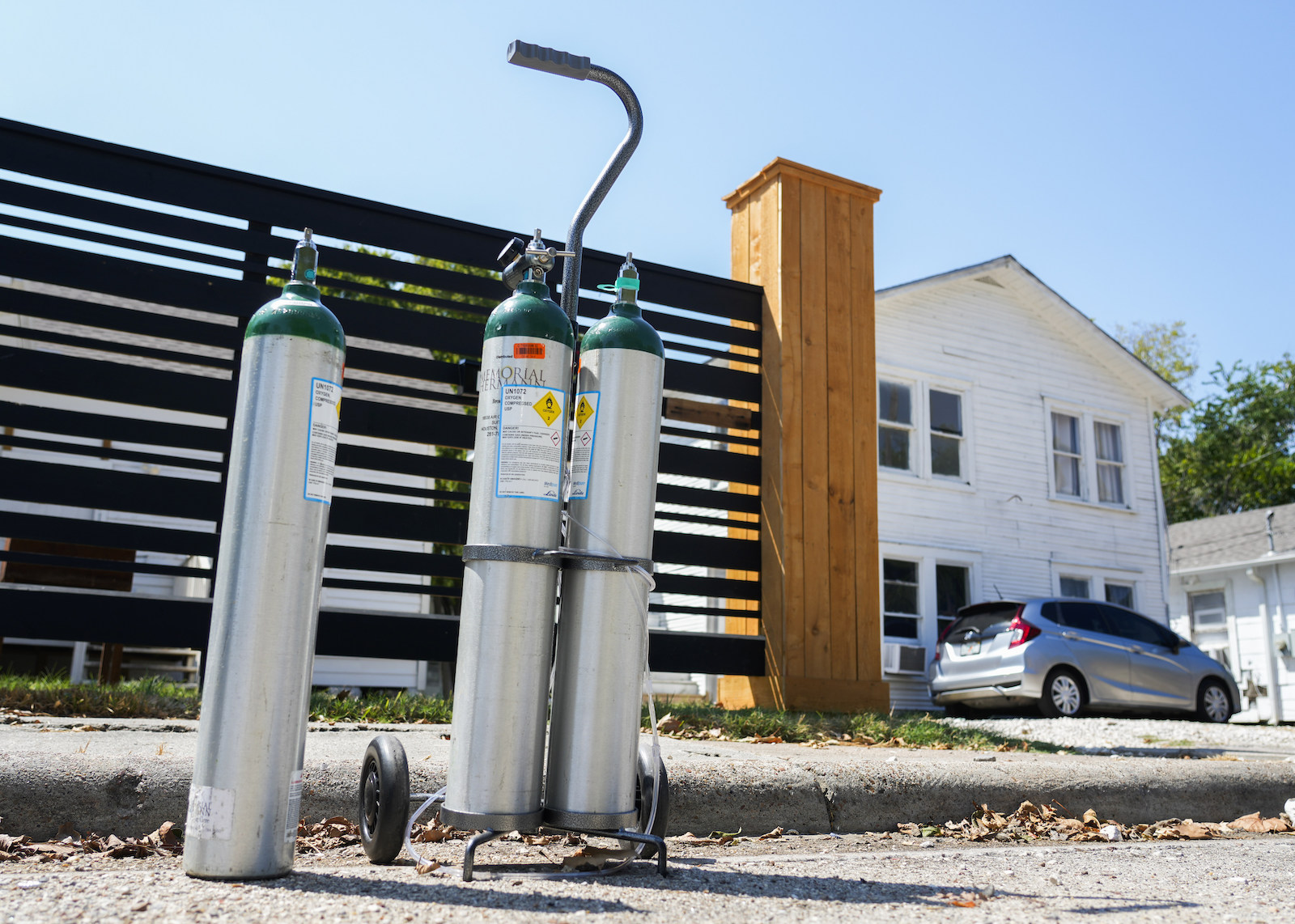
Caldwell lists all the burdens put upon the people of the Fifth Ward and Kashmere Gardens: the cancer clusters, the reluctance of Union Pacific to do cleanup, the years of begging someone to do something.
“Do you have to lose your history, your culture, or your identity in that process?” Caldwell asked.
Denae King, the associate director of the Bullard Center for Environmental and Climate Justice at Texas Southern University, grew up in Kashmere Gardens.
You have to take racial inequities into account, she said, when you ask people in her old neighborhood to leave their homes.
“In the Black community, it’s quite an honor to own property, to have property be passed down from your grandparents or your parents,” King told Grist.
That is going to weigh on the minds of the residents who have to decide whether to stay or go. It would be hard not to think, “But my family fought hard and my parents worked hard to buy this property,” she said.
Robert Bullard, founder of the Bullard Center at Texas Southern University, has studied the links between race and toxic pollution for over 50 years. His first seminal work, which established him as the father of environmental justice, focused on landfill-associated pollution in Houston in 1979.
Given his deep ties to the city, he understands what’s at stake when a community is contaminated — and even more so when it is threatened to be torn apart.
“Relocation means loss of community and loss of neighborhoods, loss of familiarity, of one’s history,” Bullard said. “It’s very hard to leave a community that you grew up in, and you thought was going to be your homestead and your American dream.”
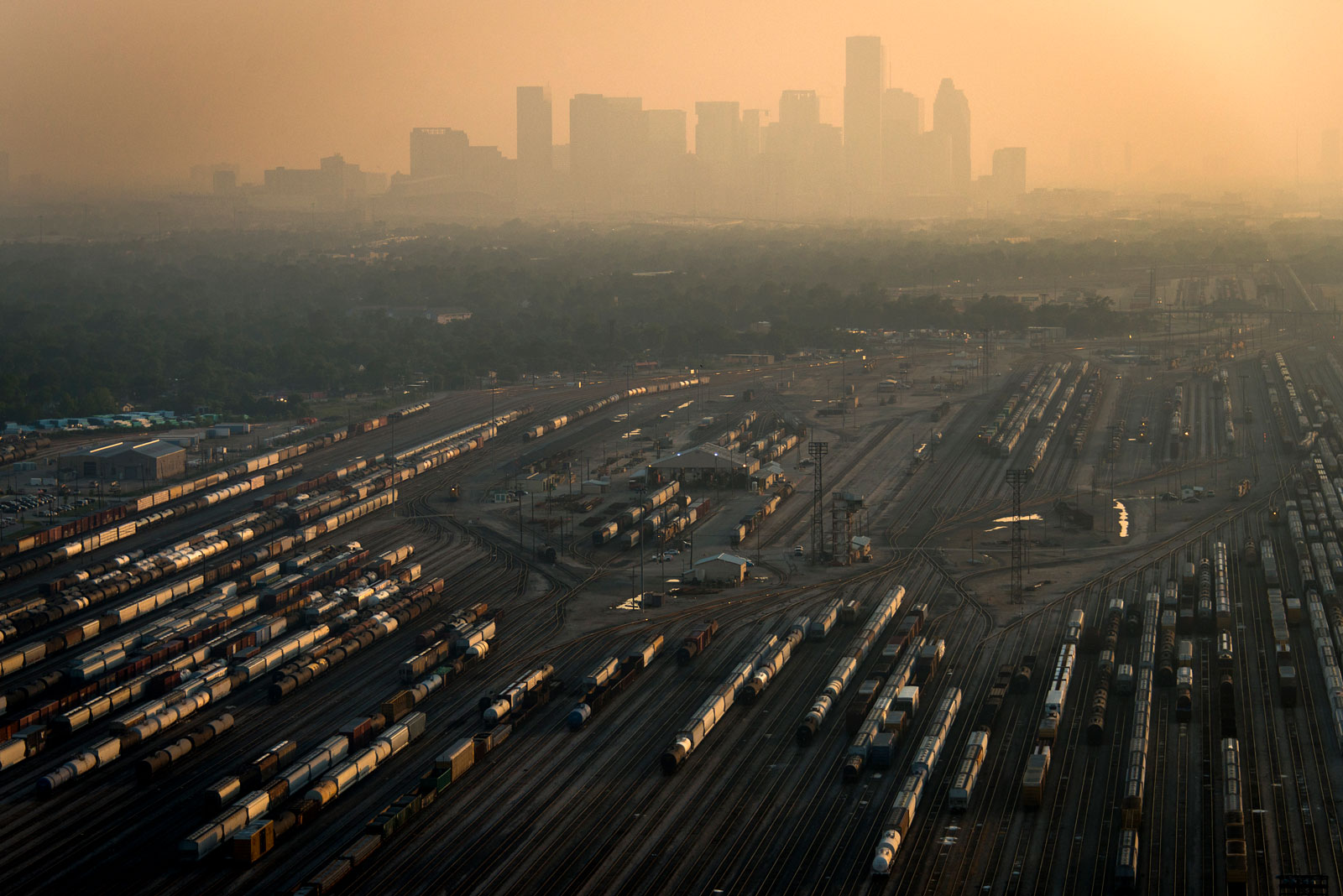
The city’s plan to relocate residents away from the toxic creosote plume was the result of years of careful planning, collaboration, and conversations with the community, according to Hopkins.
Union Pacific, which has owned the land for more than 25 years, has so far denied all responsibility for illnesses in the community. Last year, the company narrowly interpreted data released by the state as having found no cancer risk, according to the Houston Chronicle. A spokesperson for the Texas Department of State Health Services told the Chronicle that the results of the report “should not be considered a comprehensive assessment.”
In a comment to Grist, Union Pacific noted its current testing collaboration with the EPA to study air and soil contamination at the former Houston Wood Preserving Works site, and said it remains dedicated to understanding the pollution risk and conducting remediation. “Since inheriting the site in a 1997 merger with Southern Pacific, we have completed extensive remediation and cleanup,” a Union Pacific spokesperson said in an email, referring to work done at the site of the former wood preserving plant.
“While the latest round of testing is underway, our collaboration with the Fifth Ward community, the City of Houston, Harris County, and the Bayou City Initiative remains active and steadfast, and we will maintain transparency and open communication throughout the process.”

The results of testing will prove vital to the community’s next steps. Many residents are caught between having to stay and wanting to stay. Houston is an expensive city to live in, Glenn says, and many of the neighborhood’s longtime residents are at retirement age, and therefore living on fixed incomes.
“A lot of them ain’t choosing to stay there. They have to stay there,” she said.
For Hutchins, she just wants to be sure she knows her risk before leaving her home.
“If it’s not safe [in the Fifth Ward] then of course I wouldn’t want my grandkids nor my daughter here,” Hutchins told Grist. “I believe we would need to get out.”
But she wants to be sure. She’s skeptical after seeing the revitalization happening in parts of her neighborhood, and is questioning the motives of people who might want to develop in the area, since the contamination is still an issue.
“Why would they waste their money and do that?” she said.
Even if residents do voluntarily participate in buybacks of their property, the question of where they will go next is difficult to parse. A Bank of America report published last year identified Houston as one of four cities that are experiencing housing shortages amidst rapid population influx as people seek to take advantage of robust economic opportunities. This could affect the city’s plan of helping residents locate new places to live.
The city is planning on using its land bank — a nonprofit group that recycles abandoned and condemned properties into new housing — to facilitate payouts and identify potential relocation spots for affected Fifth Ward residents.
The city also wants to provide support in securing health insurance for those affected by the cancer clusters, which could be one way that experts say Houston could lead the way with legacy pollution problems.
For residents, long-time activists, and politicians alike, this has been a long and arduous process.
“The relocation and the buyout and the payments for property and homes, it might sound like a success story,” said Bullard. “But that’s often not the end of the story. The end of the story is where will people find housing, replacement housing, within this area, where affordable housing is very limited.”
While the details of Houston’s relocation initiative remain in debate, from its timeline to its financing to its logistics, there’s one thing echoed across stakeholders: Residents, advocates, scientists, and politicians all want to see Union Pacific pay.
“We didn’t ask to be contaminated,” said Glenn. “We didn’t go over there bothering Union Pacific. Union Pacific bothered us.”
Glenn wants more aid for those affected, from top-of-the-line cancer care to assistance with everyday expenses.
“I hear some people say, ‘Well I ain’t got food, because I had to pay this bill and I had to get my medicine, I had to go to chemo,’” she added.
These bills add up and the community has been paying the cost literally and figuratively for decades. Residents of the Fifth Ward and Kashmere Gardens filed a $100 million lawsuit against Union Pacific in 2022 for wrongful death on behalf of deceased residents in the area. It eventually was ruled as abated in early 2023, the term for when lawsuits are halted because the suit cannot go forward in the form it was filed in.
“Union Pacific should have set up a fund — just a once-a-month fund to try to help them out with what’s going on,” she said.
City Council Member Tarsha Jackson, who represents the Fifth Ward, thinks a lot more could be done to address the problem, which has been decades in the making. She’d love to see the same political will aimed at helping residents in the Fifth Ward and Kashmere Gardens as there was for people affected by Hurricane Harvey.
“Harvey was a disaster,” she said. “In my opinion, this contamination, it’s a disaster.”
Hutchins, meanwhile, wants to see investment in revitalizing the area. She wants to see cleanup of the area on the table as a real option.
“I would love for this to be a community again. It’s like a ghost town,” said Hutchins.
But only, she said, “if it was safe for families to come back.”
